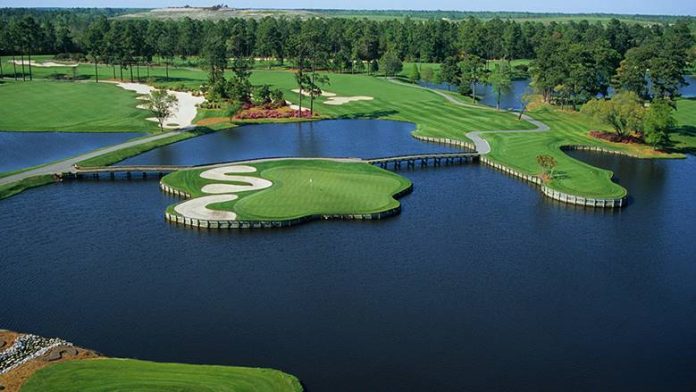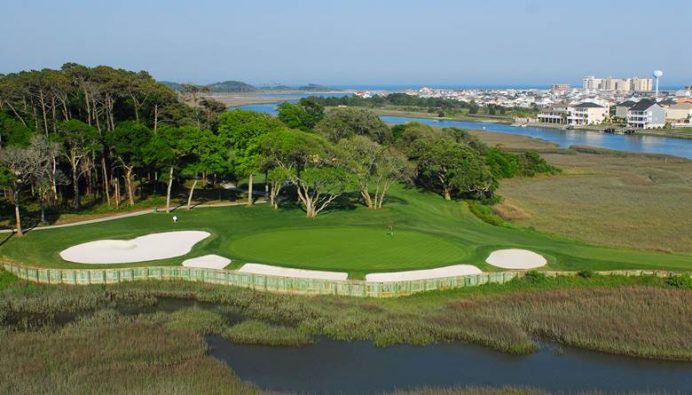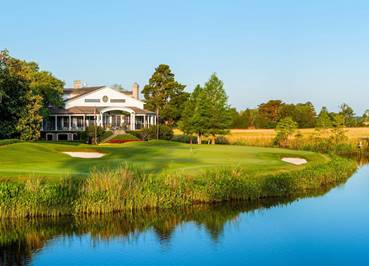
Looking to take it deep on that next golf trip to Myrtle Beach? Then here are four bases you’ll definitely want to touch.
Last year on my yearly pilgrimage to the golf mecca I played several of the area’s top courses: Caledonia Golf & Fish Club, True Blue Golf Club, Tidewater and King’s North at Myrtle Beach National, ranked #’s 4, 5, 6 and 14 respectively in Golfweek’s 2019 rankings of the “Best Courses You Can Play” in South Carolina. Myrtle Beach again dominated the ranking of the state’s best public courses.
King’s North (www.myrtlebeachnational.com) is one of three premier layouts at Myrtle Beach National Golf Club, King’s North is an Arnold Palmer-designed gem offering several of the Grand Strand’s most memorable holes. Over the years it’s been recognized as one of America’s greatest public courses, and it makes a perennial appearance on Golf Digest’s annual “Places to Play”.
Redesigned by the man himself in 1996, King’s North is like 18 courses in one. Such is the challenge of navigating one’s way around the twists and turns, strategically placed bunkers, and cleverly tiered greens that require pinpoint approach shots.
Each hole has its own special drama and beauty. The par-5 6th hole (nicknamed “The Gambler”), for example, features an island fairway that rewards the adventurous player who cleverly navigates a short cut. But like a number of holes at King’s North, there’s also a less risky route for the good old layup, -wedge-to-the-green strategy. However, that short iron better be a crisp one as water in front of the green is ready to swallow up a mishit.
On the shorter side, the par-3, island green 12th hole is just as demanding in its own way. Come out of a shot right and you’re in the water; short left and you’re in one of King’s North’s many daunting bunkers. And speaking of bunkers, the par-far 18th has 40 of them, meaning an accurate drive is a must.
With spring approaching, check out King’s North’s website for golf packages.
Strategically nestled along the Intracoastal Waterway, Tidewater Golf Club (www.tidewatergolf.com) is a beauty . . . and a beast. It’s certainly worthy of the industry and media accolades accorded it over the years. It was designed in 1990 by Ken Tomlinson, who did a masterful job of weaving the course around the saltwater marshes, while framing the judicious mix of tough and generous holes with the waterway as a stunning backdrop.

TIDEWATER
The conditions in early October were terrific, the manicured fairways making it easy to pinch iron shots into some of the best bentgrass greens you’ll find in Myrtle Beach. Both seasoned ball strikers and higher handicappers can enjoy the Tidewater experience, though it’s important to remember that the ball doesn’t fly as far at sea level. So even for better players, the 6,323 white tees should prove more than enough of a test.
Check out Tidewater’s website for some great deals on spring, summer and fall packages.
Caledonia and True Blue are often mentioned in the same breath, and for good reason. They’re sister courses located within shouting distance of one another on Pawleys Island. Both were designed by the late Mike Strantz, who cut his design teeth working under Tom Fazio. Strantz was named by Golfweek magazine in 2000 as one of the top 10 greatest golf architects of all time.
Caledonia and True Blue alone would be enough to cement any course architect’s legacy. Needless to say, both consistently top the list of the best courses in Myrtle Beach.


Caledonia (www.caledoniagolfandfishclub.com) is quite unlike any of the many other fine courses that dot the Grand Strand landscape. Built in 1994 on an old rice plantation, Caledonia is one of those courses where you walk away saying ‘every hole is different’. Put it this way, there’s plenty of competition for a signature hole. Big hitters would be unwise to pooh-pooh the yardage, the back tees clocking in at a relatively short, at least on paper, 6,526 yards. I found the next deck at 6,121 yards to be more than enough, what with the tight, tree-lined fairways, gnarly rough, well-bunkered greens, and strategically placed water hazards. There isn’t a par 3 over 175 yards, yet each required a precision iron shot because of the undulating greens and traps guarding them. Particularly tough is the stretch from the 12th hole to the 16th, five consecutive par 4s that can make or break a round. Conquering them makes the lovely 18th over the marsh an even more special way to finish.
The adjacent True Blue (www.truebluegolf.com), which opened in 1998, is acknowledged by some as Strantz’s masterpiece. Flush with native grasses and vegetation, the course is Strantz’s homage of sorts to Pine Valley and Pinehurst #2. He built it on the site of the historic True Blue Plantation, and you can almost feel that history in the air as you navigate the natural beauty that abounds. While the landing areas are generous, cavernous waste bunkers and water hazards at every turn can nibble away at a good round. As with Caledonia, no two holes are alike, and few courses so cleverly blend drama and dread with fun and excitement. The white tees at 6,375 yards provide a stiff challenge, but if you’re Dustin long and feeling especially adventurous, you can step back to the Golds at 7,126 yards.
Caledonia and True Blue offer spring, summer and fall packages, which can be found on their websites.
The reception and service at all of these courses — from the bag drop to the pro shop to the starter’s hut — were first rate, just as they should be at every course.
As previously mentioned, critical to enjoying all these courses is by playing the right tees. Canadians have to remember that Myrtle courses are at sea level and play longer than the yardage. The 6,000-yard white tees might play as long as 6,300 in Canadian yards.











